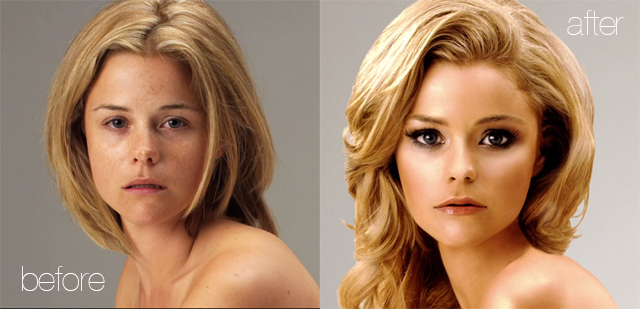Photoshop allows for the manipulation of photographs in countless ways, from smoothing skin and erasing imperfections to altering body shapes and sizes. While this technology can undoubtedly enhance the aesthetic appeal of images, it also perpetuates unrealistic beauty standards and can contribute to negative body image issues among consumers, particularly young people.
Why This Matters
This transformation can create a false perception of beauty and lead to feelings of inadequacy and dissatisfaction among those who compare themselves to these idealized standards. Research has shown that exposure to digitally altered images can negatively impact self-esteem, body image, and mental well-being, particularly among women and young girls.
Given these concerns, there is a growing call for greater transparency in advertising practices, particularly regarding the use of Photoshop and other editing techniques. Some argue that advertisers should be obligated to disclose when images have been significantly altered, similar to the warnings placed on tobacco products or the disclaimers accompanying retouched photos in some fashion magazines.
Transparency
Proponents of mandatory disclaimers argue that consumers have the right to know when they are being presented with an unrealistic depiction of beauty. By providing transparency about the extent of digital manipulation, individuals can make more informed decisions about the media they consume and better understand the potential impact on their self-image.
Diversity and Inclusivity
Moreover, advocates contend that disclosing the use of Photoshop could help promote greater diversity and inclusivity in advertising. By acknowledging that even models with traditionally “ideal” features undergo extensive editing, advertisers may feel compelled to represent a broader range of body types, ages, and ethnicities in their campaigns, thereby promoting a more realistic and inclusive standard of beauty.
Undue Burden?
However, opponents of mandatory disclaimers raise several counterarguments. They argue that imposing such requirements could place undue burdens on advertisers and stifle creative expression. Additionally, they suggest that consumers are already aware that images in advertising are often digitally enhanced and that adding disclaimers may not significantly impact their perceptions.
Furthermore, some critics contend that focusing solely on the use of Photoshop overlooks broader issues within the advertising industry, such as the perpetuation of harmful stereotypes and the objectification of individuals. They argue that addressing these underlying issues requires more comprehensive measures, such as promoting diversity and authenticity in advertising campaigns.
Conclusion
Ultimately, the question of whether advertisers should be forced to put disclaimers on photoshopped photos is a complex and contentious issue. While transparency in advertising is undoubtedly important, it’s essential to consider the broader societal factors that contribute to unrealistic beauty standards and negative body image.
Instead of solely relying on disclaimers, a multifaceted approach that includes promoting diversity, authenticity, and body positivity in advertising may be more effective in fostering a culture that celebrates beauty in all its forms. By challenging narrow beauty standards and embracing diverse representations, advertisers can play a pivotal role in promoting self-acceptance and empowering individuals to embrace their unique beauty, both inside and out.














